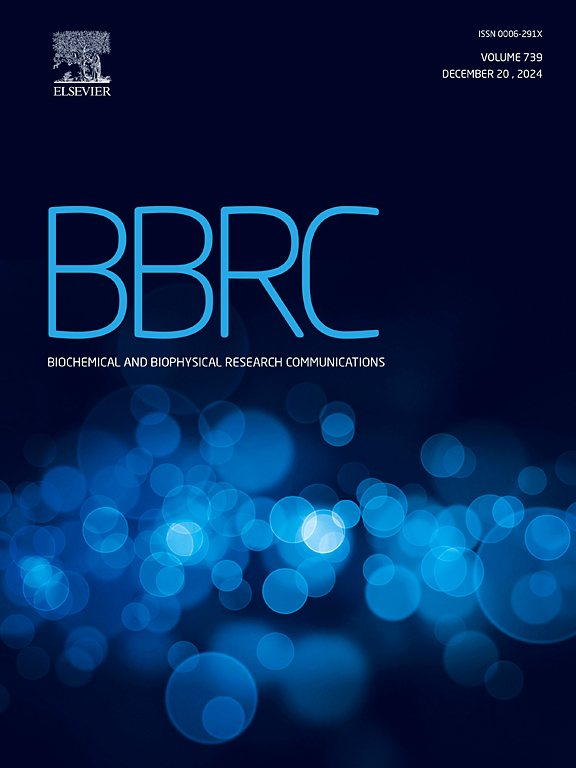Role of bile acid-dependent Takeda G-coupled protein receptor 5 (TGR5) in regulating AMPK expression in human podocytes
IF 2.5
3区 生物学
Q3 BIOCHEMISTRY & MOLECULAR BIOLOGY
Biochemical and biophysical research communications
Pub Date : 2025-03-20
DOI:10.1016/j.bbrc.2025.151671
引用次数: 0
Abstract
Bile acids affect podocyte function by stimulating membrane-bound Takeda G protein-coupled receptor 5 (TGR5), the activity of which is linked to the regulation of glucose and lipid metabolism. In podocytes, adenosine monophosphate-dependent protein kinase (AMPK) is critical for maintaining energy balance, suggesting that the bile acid-dependent stimulation of TGR5 may impact AMPK activity to regulate metabolic processes in podocytes. Despite the beneficial effect of TGR5 activation on AMPK activity in podocytes that are exposed to hyperglycemic conditions, the effect of TGR5 signaling on AMPKα expression and phosphorylation state under control conditions have not been studied in podocytes. Our studies confirmed TGR5 expression in podocytes at both the mRNA and protein levels. Moreover, TGR5 inhibition decreased the protein expression of both AMPKα1 and AMPKα2 isoforms, which correlated with significantly lower levels of AMPKα phosphorylation at Thr172 in podocytes. Additionally, the immunofluorescent staining of podocytes with pharmacologically inhibited TGR5 activity were characterized by a lower mean intensity of the AMPKα fluorescence signal. TGR5 stimulation decreased the mRNA expression of AMPKα1 and AMPKα2 but did not change the degree of AMPKα phosphorylation at Thr172. These data suggest that TGR5 inactivation significantly downregulates AMPK activity. This may shed new light on the bile acid-dependent regulation of glucose and lipid metabolism in podocytes, especially under pathological conditions.

求助全文
约1分钟内获得全文
求助全文
来源期刊
CiteScore
6.10
自引率
0.00%
发文量
1400
审稿时长
14 days
期刊介绍:
Biochemical and Biophysical Research Communications is the premier international journal devoted to the very rapid dissemination of timely and significant experimental results in diverse fields of biological research. The development of the "Breakthroughs and Views" section brings the minireview format to the journal, and issues often contain collections of special interest manuscripts. BBRC is published weekly (52 issues/year).Research Areas now include: Biochemistry; biophysics; cell biology; developmental biology; immunology
; molecular biology; neurobiology; plant biology and proteomics

 求助内容:
求助内容: 应助结果提醒方式:
应助结果提醒方式:


